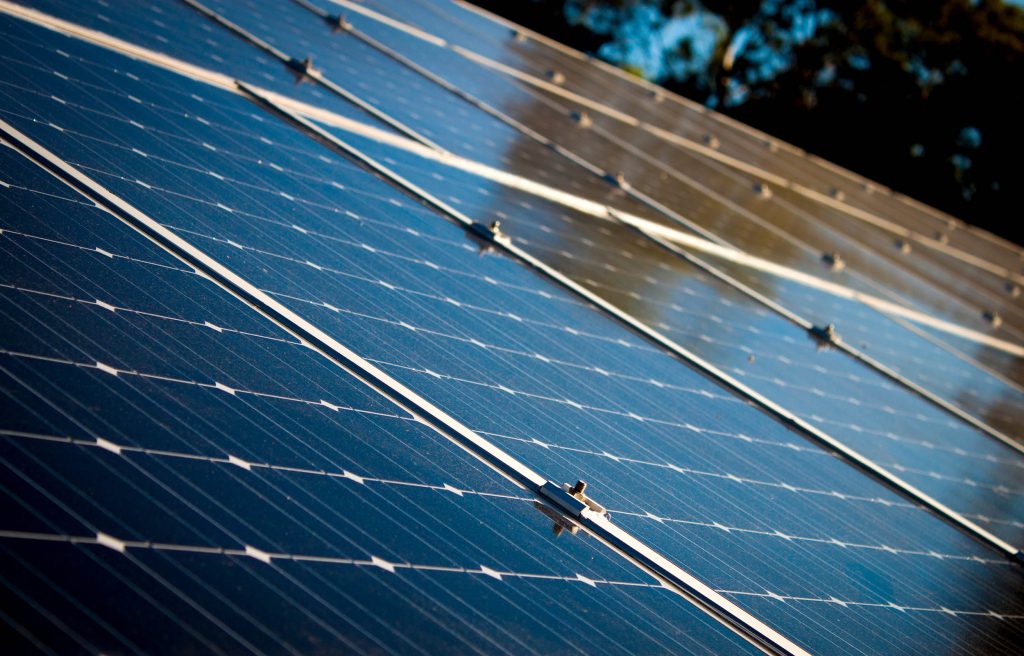The City of Melbourne has become the first city in Australia to use 100 percent renewables to power its roads and companies. As a result, ‘The Renewable Energy Capital’ is a name the city can proudly call itself. Melbourne City Council is also the first in Australia to introduce a renewable energy Power Purchasing Agreement.
The city will draw its clean energy in the 80 MW wind farm at Crowlands, near Ararat in south-west Victoria. Fourteen of Melbourne’s leading councils, schools, corporations and cultural associations banded together to support construction of this wind farm using combined buying power.
Melbourne Renewable Energy Comes From The Wind
As it has been said, 25 of 39 wind turbines have already been set up by Pacific Hydro. The project will be finished by May. Authorities will subsequently expand the job and businesses across Melbourne will also have the ability to share in similar PPAs. This is hoped to create an investment in renewable energy.
Smaller Regional Centers May Also Benefit From PPAs
Melbourne is a major city with a $92 billion economy. On the other hand, the pioneering strategy will also benefit smaller regional centres since it is easy to replicate on different scales. The real challenge would be to get Australia’s other big cities to take up the gauntlet and commit equally as that of the Melbourne renewable energy commitment.
One in Five Councils Target 100 Per cent Renewables
Pacific Hydro is installing a rooftop solar setup using energy storage at Crowlands Town Hall. There are currently few solar-powered town halls around regional Australia. Crowlands wind farm created over 140 regional projects during its construction period. It has also provided eight ongoing maintenance tasks.
A government report indicates that one in five local governments across Australia now have 100 per renewable energy objectives. The Queensland Government has also released a solar farm manual to assist the nation’s local government authorities maximise their economies from solar power. This may then help them build solar farms providing 5 MW or more of clean power to the grid.
Council Solar Schemes Help Residents Go Solar
Councils across Australia are now helping residents and companies, such as this Melbourne based conference room for hire, to install solar energy with community bulk buy schemes. Some enable people to cover back over many decades, but some add repayments to council prices. Some councils also organize discounted solar installations through local installers.
Moreland and Darebin City Councils both began solar bulk buy schemes in 2014. Positive Charge (A not-for-profit energy conservation organisation) partners with local councils across Victoria, while MASH (More Australian Solar Homes) conducts solar bulk buys for councils in Central Victoria.
—
In Australia, studies surrounding the usage of renewable energy sources have been a popular topic for ages. In 2009, an appraisal was made to highlight the differences between energy intake in commercial and residential buildings. This evaluation relies on desktop research and data gathered from government-funded projects and activities.
The Predicted Scale and Potential for Expansion by 2030-40
The combined residential and business sector accounted for 17% of final energy consumption in 2014-15. This intake is expected to rise by 1.2% each year through to 2049-50, with the share of final energy consumption projected to rise to 18 per cent.
The sector is forecast to be a major source of increase in electricity consumption in the area to the longer term, reflecting population growth and comparative growth in the services sector.
Commercial Buildings
The total energy intake of Australia’s commercial buildings in 2009 has been estimated to have been 3.5 per cent of the country’s gross final energy consumption in that year. Total energy consumption in commercial buildings is expected to rise by 24% over the period 2009 to 2020. Commercial buildings which are frequented by large numbers of people such as the Melbourne City Conference Centre requires a certain level of electricity usage for its upkeep, and as the solar-powered of these buildings are increasing, so does the rate of energy consumption in the city.
Electricity dominates the fuel combination for all commercial buildings in Australia, using a share of nearly 83 per cent in 2009. Natural gas accounted for over 175 of their gas mix, while the combined share of LPG and petrol was less than 1 percent.
Heating, ventilation and air conditioning (HVAC) is normally the most significant end use for power, followed by lighting and gear. Space heating is the dominant end use for gasoline.
Industrial property development and management are anticipated to include raising quantities of renewable energy technologies as developers respond to emerging principles (such as those that apply to Sydney’s Barangaroo development) and growing community demand for construction sustainability.

Deployment of solar PV is growing in commercial buildings, with over 15,000 businesses throughout the nation have now installed a solar power system. In 2014, 52 of newly installed solar power systems on commercial buildings were over 100 kW but less than 1 MW.
Residential Buildings
Solar PV attained approximately 5% of residential electricity usage in 2012 and may reach roughly 13 percent in 2020. Solar hot water systems also have an established market in the home sector. These markets are anticipated to grow without the need for additional subsidy past the little scale certifications generated under the RET.
Building integrated solar PV is at its infancy although a minumum of one Australian firm has an integrated solar PV + thermal roof tile program available on the market.
CSIRO is developing a solar heating and cooling system that’s at a prototype testing stage.
You will find industrial markets for ground source heat pumps in Western Australia and Victoria as the tech and business model are older.
The Influence of Investment
Renewable energy in regards to the management of any residential or commercial property is characterized by a mix of fully mature and emerging technologies, services and business models. The lively nature of the numerous markets in these sectors means that there is scope for additional investments to help unlock opportunities for users by supporting technology development and demonstration in addition to new business models.
An investment can be particularly significant in supporting:
- development of Australian technology
- financial and business innovations that tackle high trade costs; capital constraints; and split incentives (specifically the disconnect between the investment made by the building owner and the monetary benefit derived from that investment, which accrues to the renter through reduced energy bills)
- actions that address local obstacles to uptake.
In the example of engineering development and cost reduction that occurs mostly as the result of international action, the government could support activities that enable adaptation of those technologies to Australian states.




